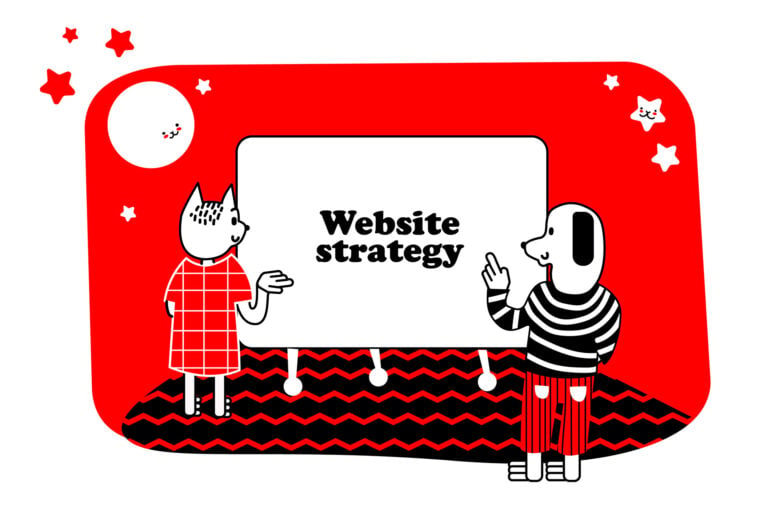What is under the hood of a great online store? Often, we focus on the more visible elements of ecommerce (fun copy, quirky web design, sticky UX etc), but there are lots of little details that make up a positive online shopping experience.
Let’s look at some of the more often overlooked ecommerce elements.
About to embark on an ecommerce redesign project? Read our other blog for ecommerce website commissioning tips.
Cookie compliance you can stand by
Good cookie compliance is essential when it comes to adhering to EU privacy and GDPR laws. While there is a minimum level of compliance all stores must aim for, think about how you can create an engaging non-disruptive cookie experience that builds trust. (There are lots of good plugins and apps that can help you with your cookie implementation).
Be clear on the difference between essential cookies and optional (marketed as “recommended”) cookies and give your user the choice. A popular example is having a toggle system where users can select recommended cookies, all cookies, or no cookies at all. Recommended cookies should be something that you can justify – for example, the ability to track website performance.
It’s important to give the user relevant information in a clear manner, without unnecessarily impeding data collection. As a retailer, the onus is on you to give your user the best options and clearly explain data collection.
Email marketing: from automated to creative
Email marketing is an essential part of ecommerce, so create email automation workflows that work in tandem with your ecommerce store. Alongside automated workflows, you should also send more creative and reactive emails. When you’re in people’s inboxes, it’s about trust: you’re creating a relationship.
Set up your automated email journeys in function of all the different ways in which customers interact with your store, whether that’s following up with them during a free trial period, offering them product upgrades, or providing their logins to the customer portal. Automated check-out offers, abandoned cart emails, and subscriber offers will help you improve your customer lifetime value. These are all easy email templates that you can write ahead of time and set and forget.
Then there will also be occasions such as celebration days or brand milestones where you may want to be a little bit freer and more creative with your messaging. This is the more visual and creative side of email marketing that will probably be a lot more reactive and less automated.
On your online store use tactics such as popups or opt in forms to collect people’s emails. The key here is to communicate clearly with your customers what they are signing up for: set clear expectations from day one. You can even ask them to tell you what kinds of emails and email frequency they prefer.
Ecommerce email marketing often revolves around scarcity, limited editions, and exclusivity, so have a go at playing around with those themes where appropriate.
Data architecture and integrations
Survey all the different systems that intersect with your online store: customer relationship management (CRM) software, inventory management software, payment portals, digital delivery platforms, support inboxes, editorial tools etc. Think about how data flows from one place to the next when a customer places an order. Where is the data stored? Who owns the data?
- Your ecommerce outfit may only be the tip of the iceberg when it comes to all the commercial software and systems behind it. What is the data hierarchy that makes the most sense for your business? Does placing a new online order immediately launch a new CRM contact and workflow, or is there an intermediary step needed for segmentation?
- Having a clear picture of your data architecture will help you be more agile and flexible, and crucially, it will show you the parts of your business that you need to invest in.
- In technical integration-heavy systems, there will sometimes be errors: things will not update in the way that you expect them to. What happens then?
- A better understanding of your data will also give you more automation opportunities.
Micro touchpoints
The customer journey is made up of lots of micro touchpoints. Have you delved into the finer points of your customer experience?
- One popular micro conversion is the filling in of forms (contact forms, stock enquiries, licence registration etc). Aim for a dynamic experience: as soon as the customer hits a roadblock, there needs to be a clear next step or prompt in your form. Use clever microcopy and your form design to facilitate data collection, using as many pre-filled and automated fields as you can.
- Another touchpoint affecting the discoverability of your products is your on-page navigation. Use breadcrumbs on every product page to signal what product collection it belongs to. Use your URL structure to reinforce this structure.
- A search experience is another important touchpoint, so ensure you have a good search experience. Could generative AI or a chatbot help you here? Conversational search is not always the answer, but it may help people delve deeper into your catalogue.
Read the small print
Ecommerce small print can have a surprisingly big impact on conversions, and on how customers build trust with you. Expertise and trustworthiness online are big currency.
Is your shipping and returns policy easily found? Do you have a about us page with a company address? In Finland it’s common to have your company billing details online. In Germany, you have a legal requirement to have an Impressum page that includes lots of company data. This kind of transparency can really help embed your ecommerce store in the right way.
Don’t just bury this valuable information. Have these crucial details in the footer menu so that people can always access them. You can never be too clear. People might be operating in their second or third language, so don’t feel like you can’t spell things out.
Screenshots, videos, tutorials – invest in this kind of customer-friendly and support-oriented content. Consider whether a user manual, or even an academy programme, might be appropriate for you.
Social proof
Social proof looks different depending on your niche: for B2C ecommerce stores, you may emphasise reviews and aggregate ratings, whereas in B2B stores, professional endorsements or recognisable figureheads are more compelling. What you want is a social element to build trust and credibility.
- Testimonials and even usage statistics and figures can really help paint a clearer picture of who is using your products. For more expensive products, you may want to invest in detailed case studies that can really help justify a purchase. This is something that is especially useful in software sales.
- If you have testimonials or customer details in another system right now, consider how you can bring them to your online store. Think about how you can keep collecting and adding social proof to your store through automated emails, pop-ups, and questionnaires. Social media can also be a powerful tool here.
Loyalty marketing
Loyalty marketing has been quite mainstream for a while now, but have you considered what the loyalty opportunity is for you?
It’s not about creating community just for the sake of it; it’s about seeing the subtle ways in which you can encourage membership and community on your ecommerce store.
Some ideas: a super-user webinar series, a group on social media, a Q&A board, or a customer portal where people can check their orders, collect points etc. Think about the small ways in which you can encourage people to engage with you on a more long-term and personal basis that goes beyond one purchase. If you are selling digital materials, there may be a renewal cycle or a workable subscription model you could implement.
Performance testing
Performance issues come down to a variety of factors, but the core issue is having no reliable way for testing and benchmarking performance. There are big usage spikes in publishing, so we have built-in mechanisms and methods to deal with this. When your website is experiencing a lot of requests and is struggling to balance its load, you want a delivery method that will keep you operational. The actual mechanism depends on your content management system, but things such as CDNs (content delivery networks) are common.
- Do you have an idea of what would happen if 10,000 people suddenly access your website in a brief period of time?
- Do you have any kind of contingency plan?
Performance testing and testing of your website’s technical environment is definitely a good investment and something that maybe gets a little bit overlooked.
Multilingual website upkeep
Multilingual elements on your website mean you can offer different experiences based on the language version.
Especially in ecommerce, you need to really think about how your product catalogue, your category content, and silo content works across those different websites. There’s no one-size-fits-all model here for how to manage a multilingual ecommerce website, but you must think about how you can create an experience that translates across all elements.
At the same time, it’s easy to have a language that really goes far beyond the others, and then the others like behind. So maybe think about how you can also help close that gap.
Maintaining a good international ecommerce experience can come down to cutting back and reducing, rather than adding.
Identity and access management
We recently wrote about identity and access management. It is a big topic, but having a great sign-in experience is a no-brainer for your ecommerce venture. Being able to offer SSO (single sign-on) experience where users only have one log-in for all your different digital products is a practical option to consider. Having a good identity and access management strategy will not only improve your CX (customer experience), but also help you with data and cybersecurity concerns.
Any other hidden ecommerce features that come to mind? What surprised you most about ecommerce in practice?






